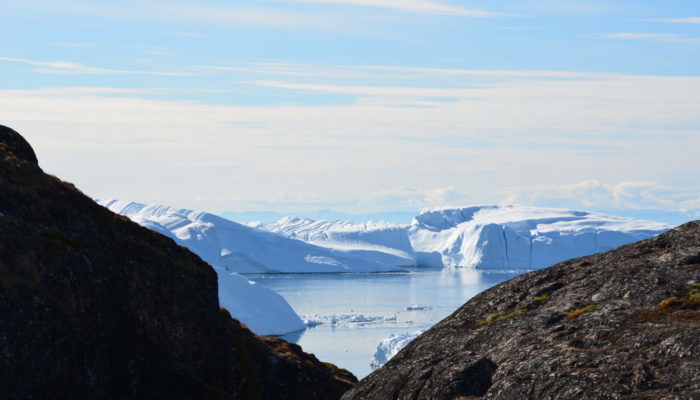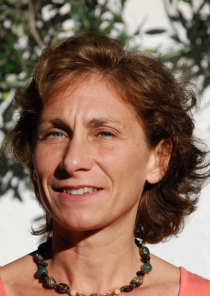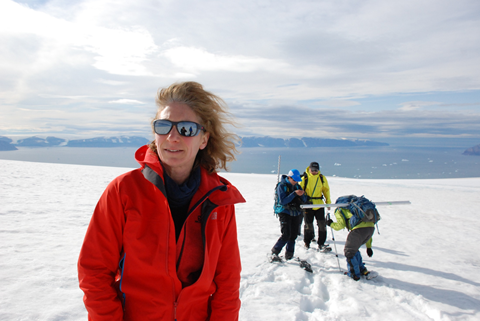
In today’s interview, we talk with Anne Mangeney, Professor of Geosciences at the Paris Diderot University. Anne has been awarded the 2022 Sergey Soloviev Medal. This medal is awarded for outstanding scientific contributions in fundamental research that improves our knowledge of basic natural hazards principles and research that assesses and leads to the proper mitigation of natural hazards from human and environmental perspectives.
Hi Anne and first of all, CONGRATULATIONS!!! You have been awarded the Sergey Soloviev Medal for your outstanding scientific contributions to fundamental research. Would you tell us about your career?

Professor Anne Mangeney
I am a Professor at the Paris Diderot University and a researcher in the seismology group at the Institut de Physique du Globe de Paris. Following my master’s degree in physics and oceanography, I completed my PhD thesis on the theoretical and numerical modelling of the anisotropic behaviour of polar ice at the Grenoble Glaciology Lab. After a post-doc at French Atomic Energy Commission, I was recruited at University Paris 7 (Pierre Simon Laplace Institut IPSL and then IPGP) to study first ground-vegetation-atmosphere exchanges, and then gravitational flows, tsunamis, and glaciers through mathematical and numerical modelling as well as laboratory and field experiments. For six years, I was also partially assigned to a mathematics team at INRIA-J.L. Lions. In 2006, I spent a sabbatical year at the Institute for Nonlinear Science, UC, San Diego, USA, working on granular physics and one month at CalTech (USA) in seismology in 2009. In the last ten years, I have reoriented my research towards studying the seismic waves generated by landslides and glaciers, particularly within the European Research Council project SLIDEQUAKES.
Can you tell us more about your field of study?
My research is related to landslides and tsunamis, glaciology, seismology, planetology, and volcanology. My main contribution is understanding and modelling natural flows with complex rheology by combining theoretical and numerical approaches with laboratory and field experiments. I lead innovative work on analysing seismic waves generated by these instabilities to constrain the physical processes involved. In particular, the work I performed with my many collaborators worldwide improved detection and monitoring of landslides and their accurate modelling, making it possible to quantify their high mobility and impact on population and infrastructures. This research quantifies ice mass loss due to iceberg calving in Greenland during the last twenty years, contributing to investigating climate change’s effects in polar regions. The recent laboratory and field works performed with specialists in acoustics and seismologists also showed that repetitive seismicity with an amplitude much smaller than traditionally thought may trigger rockfalls by inducing progressive damage of slopes at a time scale of several days. I enjoy working on the many exciting applications of this research in hazard assessment and the study of volcanic activity through gravitational flow monitoring, carried out in conjunction with volcano observatories or national and local actors involved in risk assessment. My papers, invited talks, and courses in geophysics, mathematics, mechanics, and physics reflect my research’s multidisciplinary nature.
What has motivated you to pursue this field of research? What do you really like about it?
I chose this field because I am fond of nature, the multiple aspects of natural processes, and the beauty and power of mathematics and physics, particularly fluid dynamics and waves. I naturally performed interdisciplinary research, making it possible for my group of close collaborators to address geophysical issues with the state-of-the-art understanding and tools developed in mathematics, physics, mechanics, and acoustics. I liked the growing and long-standing common culture that we created together at the interface between these fields, which led us to propose new and profound ways to address geophysical challenges.
The problem with interdisciplinary research is the most significant difficulty for the work to be accepted and recognised in each field. However, going straight in these directions provides me with much richer interactions and leads to wide recognition in these different fields. Another critical aspect that I liked greatly was changing my research field, spanning from glaciology, landslides, tsunamis, volcanoes, planetology, seismology, and changing methodologies from theoretical, numerical, laboratory, and field developments. While it takes time to move from one area to another, it always provides new ways of viewing a problem rather than staying in the same community.

Working in the field (Photo credit: Professor Anne Mangeney)
How is your research supporting risk reduction?
The significant impact of my work in risk assessment concerns the landslide and tsunami models that I developed with my collaborators in mathematics, physics and mechanics. They have been widely validated on lab-scale experiments and field-scale events and are used worldwide. These models are now applied to build physics-based hazard maps to design evacuation plans for the population and infrastructures. A representative example is Mayotte, an island threatened by potential submarine landslides and tsunamis generated by the seismo-volcanic crisis related to the birth of a new submarine volcano in 2018. Our seismology work also supports risk reduction by developing new detection, localisation and characterisation methods for landslides, rockfalls, avalanches or pyroclastic flows. Our work on monitoring ice mass loss due to iceberg calving also contributes to quantifying the hazards related to climate change.
What do you want to say to a young scientist looking for a career in this field?
I warmly encourage young scientists to follow their own way and thinking while being as much as possible aware of the state of the art in their domain and fairly recognise it. My advice is to always stay open-minded to other approaches and visions and develop collaborations with researchers complementing your expertise, without considering the number of authors, to build long-term groups with a broadly shared culture to address complex geophysical challenges. This requires resisting what we are pushed to: impact-factor based recognition, individualism, and excessive competition.
Post edited by Gabriele Amato, Valeria Cigala, Giulia Roder
